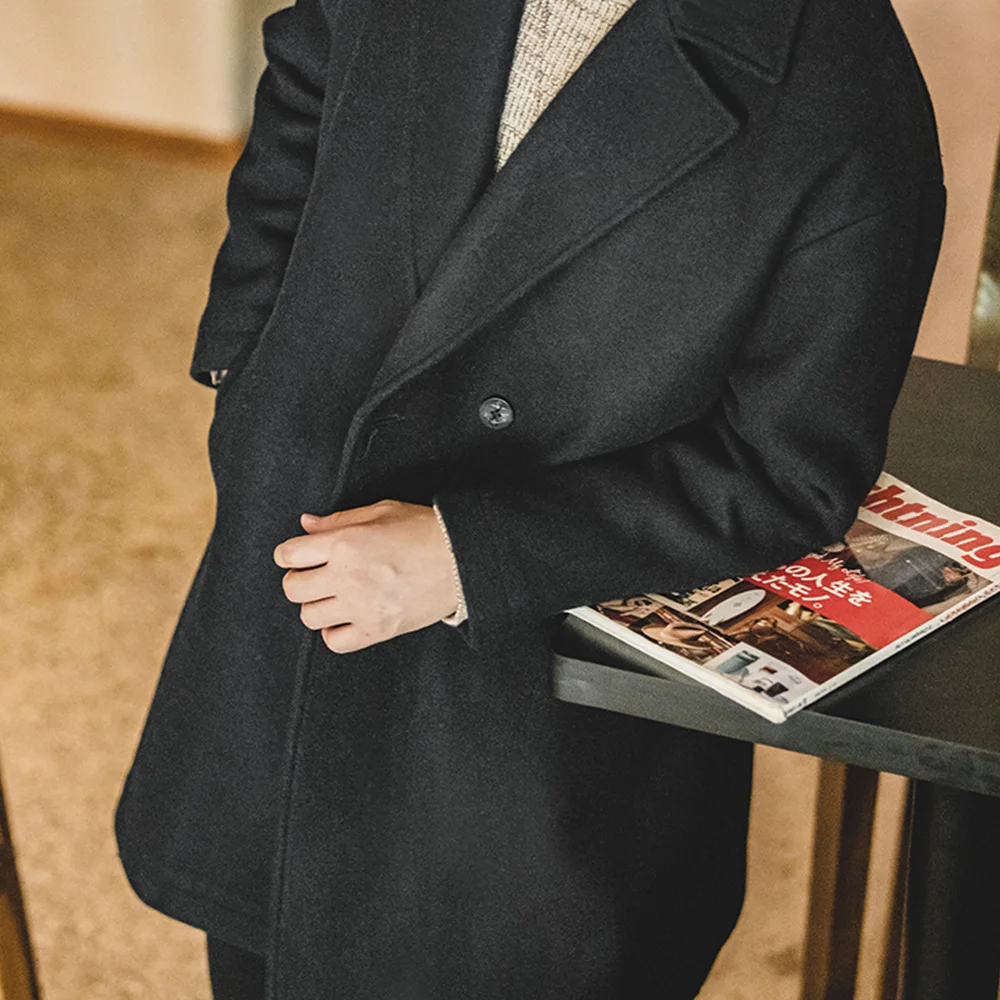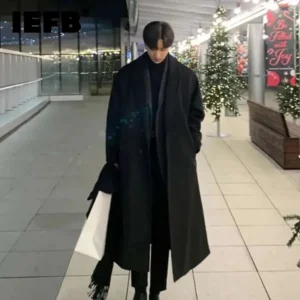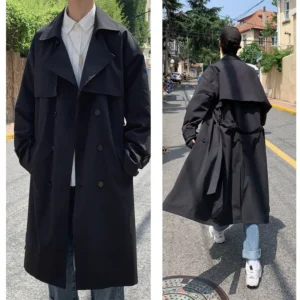Understanding the Appeal of Men’s Cashmere Overcoats
A cashmere overcoat stands as the quintessential luxury outerwear piece in a man’s wardrobe. More than just a practical winter layer, it represents a thoughtful investment in both style and comfort that few other garments can match. The allure of cashmere lies in its exceptional properties that set it apart from standard wool coats.
What makes cashmere truly special:
– Extraordinary softness that feels luxurious against the skin
– Superior warmth-to-weight ratio (up to three times warmer than regular wool)
– Lightweight feel despite exceptional insulation properties
– Natural drape that creates an elegant silhouette
– Breathability that regulates temperature in varying conditions
The timeless appeal of a well-made cashmere overcoat transcends seasonal trends. These coats have graced the shoulders of stylish men for generations, evolving subtly while maintaining their fundamental elegance. Choosing the perfect cashmere overcoat involves understanding not just your style preferences but also the quality markers that ensure longevity.
A properly maintained cashmere overcoat can last well beyond a decade, developing character while maintaining its sophisticated appearance. This longevity makes it not merely an expense but rather a timeless investment with lasting benefits that will serve you through countless winters with proper care.
Types of Men’s Cashmere Overcoats and Their Style Implications
Understanding the different styles of cashmere overcoats helps you select the perfect coat for your needs and develop a signature look. Each variation carries distinct style implications that affect how you’ll wear and pair it.
Single-breasted overcoats feature a clean, minimalist front with a single row of buttons. This versatile style:
– Projects a modern, streamlined aesthetic
– Transitions easily between formal and casual settings
– Typically has a slimmer cut that suits most body types
– Works well for daily business wear and evening occasions alike
Double-breasted overcoats make a more commanding statement with their overlapping front panels and two parallel rows of buttons:
– Exudes classic elegance with a formal presence
– Creates a stronger silhouette with broader shoulders
– Offers superior wind protection due to the overlapping closure
– Traditionally paired with formal attire but can be styled creatively for contrast
Wrap/belted cashmere overcoats introduce a relaxed sophistication:
– Features a tie belt that defines the waist
– Creates a more casual yet refined look
– Allows for adjustable fit depending on layers underneath
– Adds visual interest through the belt detail
Crombie/top coat styles represent timeless business elegance:
– Features clean lines with minimal detailing
– Usually knee-length for professional versatility
– Often has a velvet collar for subtle luxury
– Epitomizes understated business sophistication
The definitive guide to men’s cashmere overcoat styles explores these variations in greater depth, but understanding the basic silhouettes is fundamental to developing your personal style approach.
Length also plays a crucial role in the overall effect, with full-length coats delivering maximum drama and formality, while knee-length versions offer greater versatility. Car coat lengths provide a more casual, practical option for everyday wear.
For those drawn to classic sophistication, our collection of double-breasted overcoats offers timeless options that communicate confidence and refined taste.
Essential Fit Guidelines for Cashmere Overcoats
The elegance of a cashmere overcoat depends significantly on its fit. Even the finest cashmere will appear unflattering if the proportions aren’t right for your body. Understanding proper fit ensures your investment looks as good as it feels.
Key fit considerations for cashmere overcoats:
Shoulders: The seam should align with your natural shoulder edge. Too wide creates a sloppy appearance; too narrow restricts movement and causes fabric tension.
Sleeve length: Ideally ends at your wrist bone when arms are relaxed, allowing ¼ to ½ inch of suit jacket sleeve to show when worn over formal attire.
Overall length: Traditional overcoats should fall anywhere from just above the knee to mid-thigh, depending on your height and the coat style. Shorter men often benefit from slightly shorter coats to maintain proportion.
Chest and waist: Should allow for comfortable layering without appearing oversized. You should be able to button the coat while wearing a suit or sweater without visible pulling across the chest or shoulders.
Armholes: Higher armholes provide a cleaner silhouette and better mobility, though they should never feel tight or restrictive.
Mastering cashmere overcoat fit and comfort involves understanding that you’re typically buying a coat to wear over other clothing. When trying on a cashmere overcoat, wear similar layers to what you’ll typically have underneath to ensure accurate sizing.
Common fit mistakes include buying too small to achieve a “trim” look (which prevents layering and creates tension in the fabric) or selecting overly large sizes that create a shapeless appearance. The comprehensive guide on appropriate coat lengths for men can help you determine the ideal proportion for your height and build.
Remember that minor alterations can significantly improve fit—sleeve length and waist suppression are relatively simple adjustments that can transform the look of your overcoat.
Formal Styling: Pairing Your Cashmere Overcoat with Business and Formal Attire
The cashmere overcoat reaches its full potential when paired with business and formal attire, creating a sophisticated ensemble that projects authority and refinement. This classic pairing represents the overcoat in its traditional element.
When wearing your cashmere overcoat with business attire, harmony is essential. A navy or charcoal overcoat pairs seamlessly with most suit colors, while camel offers a distinctive contrast against darker suits. Ensure your coat is proportioned to cover your suit jacket completely—the coat should be slightly longer than your jacket for a proper layered appearance.
For black-tie events, a dark overcoat (black, midnight blue, or deep charcoal) creates the most appropriate accompaniment. The clean lines of a single-breasted style with minimal details often work best for these occasions, though a peak-lapel double-breasted coat also delivers impressive formality.
Footwear selection reinforces the formal nature of your outfit. Consider these pairings:
– Oxford shoes in polished leather for maximum formality
– Dress boots with suits for winter elegance
– Whole-cut or cap-toe shoes in colors that complement your overall palette
Styling formal coats with suits requires attention to proportion and color coordination. Your overcoat should complement rather than compete with your suit, creating a cohesive look from head to toe.
Formal accessorizing elevates the overall effect:
– Leather gloves in colors that match or complement your shoes
– A silk or cashmere scarf in subtle patterns or solid colors
– Minimal, elegant timepieces that don’t overwhelm the refined silhouette
For the ultimate in formal elegance, explore our collection of dress coats designed specifically for sophisticated occasions.
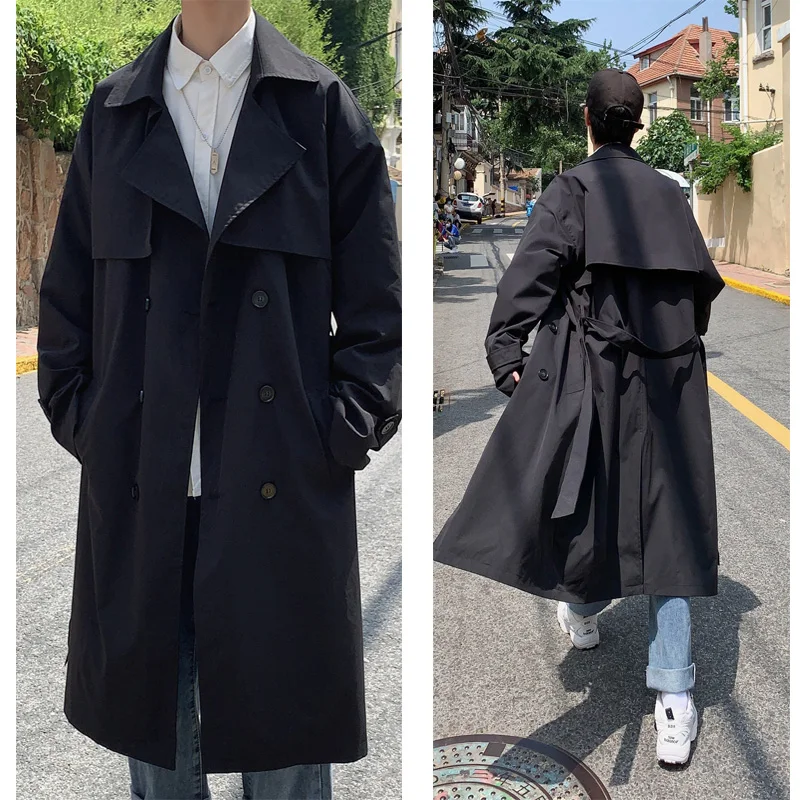
Smart-Casual Styling: Elevating Everyday Looks with Your Cashmere Overcoat
The versatility of a cashmere overcoat truly shines when adapting it to smart-casual contexts. This middle ground between formal and casual dressing offers countless creative styling opportunities while maintaining the coat’s inherent elegance.
Creating effective smart-casual looks with your cashmere overcoat revolves around thoughtful contrast and balanced formality. Dark, well-fitted denim paired with fine knitwear creates an ideal foundation—sophisticated enough to honor the coat’s refinement while relaxed enough for everyday wear. The rich texture of cashmere works beautifully alongside other quality materials:
- Merino or lambswool sweaters provide complementary softness
- Oxford cloth or flannel shirts add textural interest
- Lightweight down vests or cardigans create practical mid-layers
- Textured trousers like flannel or twill bridge formal and casual elements
Footwear options for smart-casual cashmere styling include:
– Chelsea boots in suede or leather
– Loafers with subtle detailing
– Clean, minimalist sneakers in quality materials
– Desert or chukka boots for a refined casual approach
Turtlenecks deserve special mention as perhaps the perfect smart-casual companion for a cashmere overcoat. This pairing creates a sleek, sophisticated silhouette that works beautifully without a collared shirt underneath. Fine-gauge versions look elegant while chunky knits add visual interest through textural contrast.
For versatile styling options that work across multiple contexts, explore our collection of cashmere overcoats designed with this adaptability in mind.
Weekend Casual: Styling Your Cashmere Overcoat for Relaxed Settings
Contrary to traditional thinking, cashmere overcoats can shine in casual weekend settings when styled thoughtfully. The key lies in creating intentional high-low contrasts that feel deliberate rather than mismatched, allowing the coat to elevate casual pieces rather than seeming out of place among them.
Successful casual styling with a cashmere overcoat depends on:
Selecting the right denim: Opt for dark, well-fitted jeans free from excessive distressing or casual detailing. A slim or straight fit in indigo, black, or dark gray creates the cleanest pairing.
Choosing appropriate knitwear: Crew neck sweaters, quality henleys, and fine-gauge casual sweaters bridge the formality gap between coat and casual base layers.
Footwear consideration: Even in casual settings, your footwear should maintain a certain refinement. Consider:
- Premium leather or suede sneakers in minimal designs
- Desert boots or chukka boots
Casual leather boots with subtle detailing
Thoughtful layering: A hoodie under a cashmere coat can work surprisingly well when the hoodie is monochromatic, well-fitted, and in a premium material like merino wool or high-quality cotton.
Weekend activities that particularly suit cashmere overcoat styling include urban brunches, gallery visits, casual dining, or evening entertainment—settings where you want to look pulled-together without seeming overdressed.
For particularly cold days, layering a thin down vest or jacket under your overcoat adds warmth without bulk. This approach to mastering casual grey overcoats and other neutral colors works especially well when the underlying pieces maintain a consistent color story.
Remember that casual styling doesn’t mean sloppy—the refined nature of cashmere demands that even your most relaxed pieces maintain quality and good condition to create a harmonious overall appearance.
Seasonal Styling: Adapting Your Cashmere Overcoat Through Fall, Winter and Early Spring
A cashmere overcoat’s exceptional insulation-to-weight ratio makes it versatile across multiple seasons with thoughtful adaptation. Adjusting your styling approach to seasonal conditions ensures comfort while maximizing your coat’s wearability throughout the year.
Fall Styling Approach:
– Layer over lightweight merino sweaters or cotton shirts
– Incorporate autumn colors like burgundy, forest green, and mustard in accessories
– Consider leaving the coat unbuttoned with a scarf draped loosely for milder days
– Pair with medium-weight trousers in flannel or twill
Deep Winter Styling:
– Utilize technical base layers designed for thermal regulation
– Add a lightweight down jacket or vest between your mid-layer and overcoat
– Incorporate heavier knitwear like chunky turtlenecks or cashmere sweaters
– Choose weather-resistant footwear with good traction
– Add insulating accessories: cashmere-lined leather gloves, wool scarves, and hats
Early Spring Transition:
– Return to lighter underlayers as temperatures rise
– Drape the coat over shoulders on milder days
– Switch to lighter-weight trousers and less substantial mid-layers
– Incorporate spring colors through accessories while maintaining coat compatibility
Throughout seasonal transitions, consider how different wool overcoat options might complement your cashmere piece, potentially offering greater weather resistance for particularly challenging conditions.
Protection from seasonal elements is crucial for maintaining your cashmere’s appearance. In light precipitation, minimize exposure and allow the coat to dry naturally when you return indoors. Brush the coat gently after wearing to remove surface debris before it settles into the fibers.
For additional inspiration specific to the coldest months, explore our guide to winter styling ideas for wool coats, many of which apply beautifully to cashmere as well.
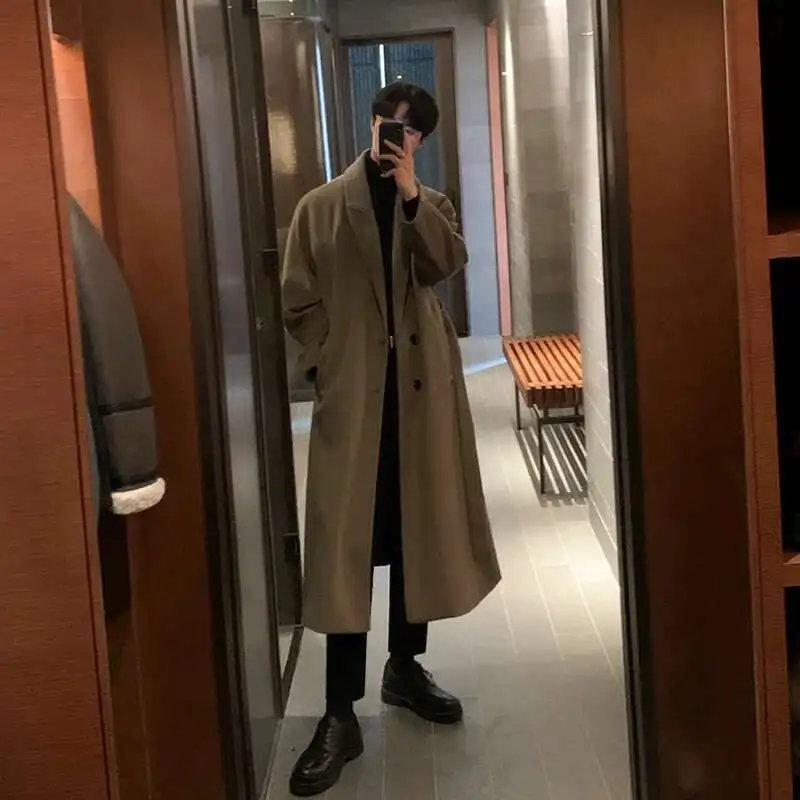
Mastering Layering Techniques with a Cashmere Overcoat
Strategic layering maximizes both the style impact and practical functionality of your cashmere overcoat. The art of layering involves building an outfit that manages temperature while maintaining a refined silhouette—all without creating uncomfortable bulk.
The Foundation of Effective Layering:
Base layer: Start with thin, temperature-regulating fabrics that sit close to the skin. Fine merino wool, quality cotton, or technical fabrics designed for warmth without bulk make ideal foundations.
Mid-layer: This insulating layer provides primary warmth. Options include:
– Fine-gauge cashmere or merino sweaters
– Lightweight vests or gilets
– Cardigan sweaters that add warmth without shoulder bulk
– Technical mid-layers from premium outdoor brands that prioritize warmth-to-weight ratioSuit jacket or blazer: In formal settings, this creates structure before your overcoat. Ensure the jacket is slightly shorter and trimmer than your overcoat.
Overcoat: The crown of your layered ensemble, providing final insulation and defining your silhouette.
The “rule of three” suggests that three thin layers often provide better insulation and style than one thick layer. This approach creates air pockets between layers that trap warmth while allowing each layer to drape properly.
When mastering the art of layering under cashmere, pay special attention to garment lengths. Each visible layer should be slightly shorter than the one covering it, creating a pleasing visual progression. This is particularly important with sweaters, vests, and jackets under your overcoat.
For maximum mobility, avoid bulky seams stacking directly on top of each other, particularly around the shoulders and arms where movement is most restricted. Thinner fabrics with high insulation properties help maintain freedom of movement while providing necessary warmth.
Mens Cashmere Overcoat, Mens Hooded Winter Coat, Mens Wool Blend Coat
Price range: $128.72 through $139.68 Select options This product has multiple variants. The options may be chosen on the product pageMens Black Overcoat, Mens Black Wool Coat, Mens Wool Overcoat
$339.18 Select options This product has multiple variants. The options may be chosen on the product pageMens Grey Overcoat, Mens Wool Blend Coat, Mens Wool Overcoat
$201.28 Select options This product has multiple variants. The options may be chosen on the product pageMens Herringbone Coat, Mens Long Overcoat, Mens Wool Overcoat
Price range: $197.16 through $203.69 Select options This product has multiple variants. The options may be chosen on the product pageMens Dress Coat, Mens Long Overcoat
$76.76 Select options This product has multiple variants. The options may be chosen on the product pageMens Double Breasted Overcoat, Mens Long Overcoat
Price range: $181.32 through $198.08 Select options This product has multiple variants. The options may be chosen on the product page
Color Coordination: Creating Harmonious Outfits with Your Cashmere Overcoat
The color of your cashmere overcoat serves as the anchor for your entire outfit. Understanding color coordination principles helps you create cohesive looks that maximize your coat’s versatility while complementing your natural coloring.
Working with Classic Overcoat Colors:
Camel/Tan: These warm neutrals pair beautifully with navy, burgundy, forest green, and chocolate brown. The rich warmth of camel creates striking contrast against cooler colors.
Navy: Extremely versatile, navy works with most colors in your wardrobe. Create sophisticated tonal looks with different blue shades, or contrast with camel, gray, or burgundy elements.
Charcoal/Gray: These cool neutrals complement virtually everything. Grey overcoats work particularly well with blues, burgundies, purples, and other cool tones.
Black: For maximum versatility, pair black overcoats with other neutrals (white, gray, beige) or use it as a dramatic backdrop for a single bold color element.
Color Coordination Approaches:
Monochromatic styling: Create sophisticated depth by combining different shades of the same color family (e.g., navy overcoat with lighter blue shirt and mid-tone blue trousers).
Complementary colors: Use colors opposite each other on the color wheel for energetic contrast (e.g., navy coat with orange or gold accessories).
Analogous colors: Combine colors adjacent on the color wheel for harmonious flow (e.g., camel coat with burgundy scarf and rust-colored gloves).
For men with high contrast between hair and skin tone (very dark hair with light skin or vice versa), high-contrast outfits often look most flattering. Those with low contrast features typically look best in more harmonious, less contrasting color combinations.
When uncertain about color combinations, remember that neutral overcoats (gray, navy, camel, black) provide the greatest versatility. These classic colors can be paired with almost anything while maintaining sophistication.
Essential Accessories for Styling Your Cashmere Overcoat
The right accessories not only enhance your cashmere overcoat’s practicality but also provide opportunities to express personal style while completing your look. Strategic accessorizing transforms even simple outfits into thoughtfully curated ensembles.
Scarves: The Natural Companion
Scarves and cashmere overcoats share a natural affinity. Consider these options:
– Cashmere scarves for ultimate luxury and complementary texture
– Wool/silk blends that combine warmth with subtle luster
– Patterned scarves that introduce visual interest against solid coats
– Contrasting colors to create focal points or harmonizing tones for sophistication
The way you wear your scarf matters too—try the classic drape, the once-around loop, or the European loop for different effects.
Glove Selection
Quality gloves provide both practicality and style refinement:
– Leather gloves (particularly in nappa or peccary leather) offer timeless elegance
– Cashmere-lined leather combines warmth and sophistication
– Suede options provide textural contrast with the smooth finish of cashmere
– Knit gloves in complementary colors for casual settings
Headwear Considerations
The right hat completes your cold-weather silhouette:
– Wool felt fedoras or trilbies for classic sophistication
– Structured wool flat caps for smart-casual versatility
– Fine-knit beanies (without pom-poms) for casual settings
– Classic watchcaps in complementary neutrals
Footwear Pairings
Your shoes should match the overall formality of your outfit:
– Oxford or derby shoes for business and formal settings
– Chelsea or jodhpur boots for versatile smart-casual wear
– Brogues for heritage-inspired looks
– Clean, minimal sneakers for contemporary casual styling
Bags and Accessories
Complete the look with carefully selected carrying options:
– Leather briefcases or document holders for business settings
– Structured leather backpacks for urban commuting
– Canvas and leather holdalls for travel
– Slim leather portfolios for minimalist organization
Remember that accessories offer an opportunity to introduce subtle personality while maintaining the sophistication that a cashmere overcoat demands.
Modern Styling Inspiration: Contemporary Ways to Wear Your Cashmere Overcoat
While cashmere overcoats embody timeless elegance, contemporary styling approaches can breathe fresh life into this classic garment. Modern interpretations maintain the coat’s sophistication while introducing current elements that feel relevant and personal.
Streetwear-Influenced Styling:
– Layer your overcoat over a premium hoodie with minimal branding
– Incorporate luxe sneakers from fashion-forward designers
– Add subtle streetwear accessories while maintaining clean lines
– Experiment with cropped trousers showing a touch of ankle or colorful sock
Minimalist Approaches:
– Embrace monochromatic dressing with tonal variations
– Select underlayers with clean lines and minimal detailing
– Focus on impeccable fit rather than embellishment
– Reduce accessories to only the most essential and refined pieces
Textural Play:
– Mix unexpected fabrics like technical materials with traditional cashmere
– Incorporate subtle textural patterns through knits and weaves
– Layer different weights of similar colors for depth
– Use contrasting fabric finishes (matte vs. slight sheen) for visual interest
Breaking traditional rules can yield surprisingly effective results. Consider unorthodox combinations like pairing your overcoat with carefully selected athleisure elements—technical trousers with tapered legs or minimal performance sneakers—for a look that feels deliberately modern rather than mismatched.
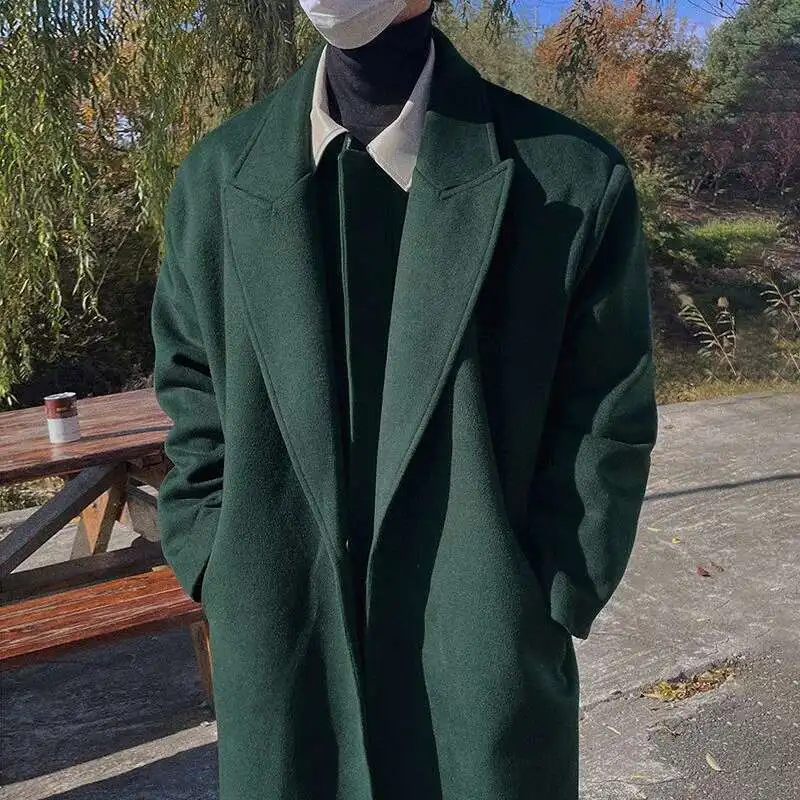
Contemporary contexts where these modern styling approaches work particularly well include creative professional environments, urban social settings, art and cultural events, and cosmopolitan weekend activities. The key to successful modern styling lies in maintaining quality and intentionality throughout your choices.
Caring for Your Cashmere Overcoat to Maintain Its Style
The elegance of your cashmere overcoat depends not just on styling but also on proper maintenance. Simple care practices ensure your investment piece retains its luxurious appearance and soft hand for years to come.
Implement these essential care habits:
– Hang your coat on a broad, structured hanger when not worn to maintain shoulder shape
– Allow 24 hours rest between wearings to let fibers recover fully
– Brush gently with a soft clothes brush after wearing to remove surface debris
– Spot clean minor marks promptly with a damp cloth and mild soap
– Air your coat regularly away from direct sunlight
For seasonal storage, clean your coat first, then store in a breathable garment bag with cedar blocks (not mothballs) to deter moths. Never store cashmere in plastic, which can trap moisture and damage fibers.
Address pilling—those small fabric balls that can develop in high-friction areas—by gently removing them with a cashmere comb or specialty fabric shaver designed for delicate materials.
Professional cleaning should typically be done once per season or when visibly soiled. Choose a cleaner experienced with luxury materials, and understand that cashmere blends versus pure cashmere may require slightly different care approaches.
With proper maintenance, your cashmere overcoat will continue to be the cornerstone of your cold-weather wardrobe, developing character while maintaining its distinguished appearance.
Frequently Asked Questions About Styling Cashmere Overcoats
Can cashmere overcoats be worn in light rain?
Brief exposure to light moisture won’t immediately damage cashmere, but the fabric isn’t naturally water-resistant. If caught in light rain, gently blot (don’t rub) moisture when you arrive indoors, and allow the coat to dry naturally away from direct heat. For regular wear in damp conditions, consider a wool overcoat with some water-resistant properties instead.
Is it acceptable to wear a cashmere overcoat with jeans?
Absolutely, when done thoughtfully. Choose dark, well-fitted jeans free from distressing, paired with refined casual pieces like merino sweaters or quality button-downs. This high-low combination works especially well with more casual coat styles like single-breasted designs without formal detailing.
How should different body types style cashmere overcoats?
Taller men can wear longer coats and larger patterns, while shorter men benefit from knee-length or shorter coats with vertical details. Athletic builds suit most styles, particularly those with some waist suppression. Larger frames look best in single-breasted styles that create clean lines. The key for all body types is proper shoulder fit and appropriate length.
Can cashmere overcoats be worn open, or should they be buttoned?
Both approaches work depending on temperature and aesthetic preference. Buttoning creates a more formal, put-together appearance and provides maximum warmth. Wearing the coat open creates a more relaxed look that showcases underlying layers. For the best of both worlds, try buttoning only the middle button of a three-button coat.
What’s the ideal length for a versatile cashmere overcoat?
The most versatile length falls just above the knee, allowing easy movement while providing good coverage. This mid-length works well across formal and casual contexts and flatters most body types. Just as 100 percent cashmere coats provide exceptional warmth, the right length ensures both style and functionality in various situations.

